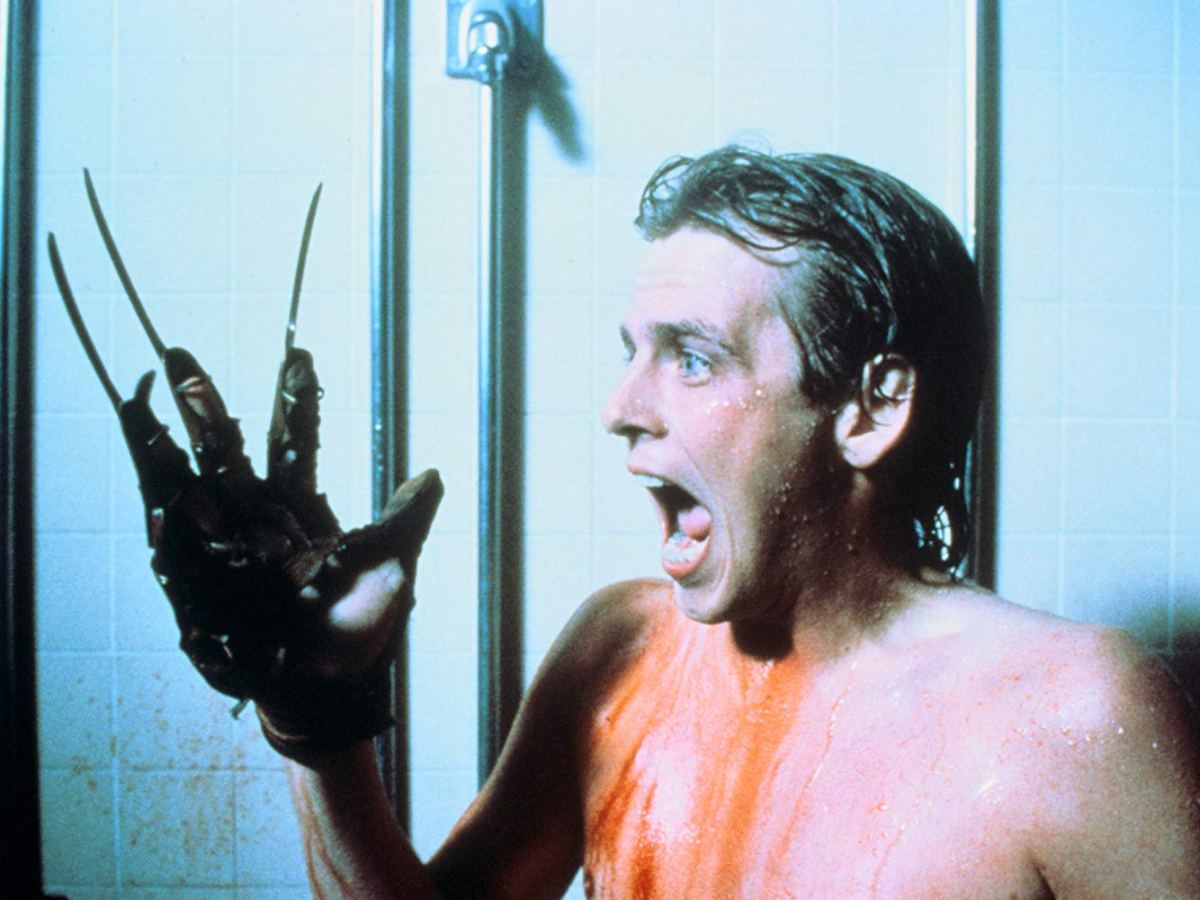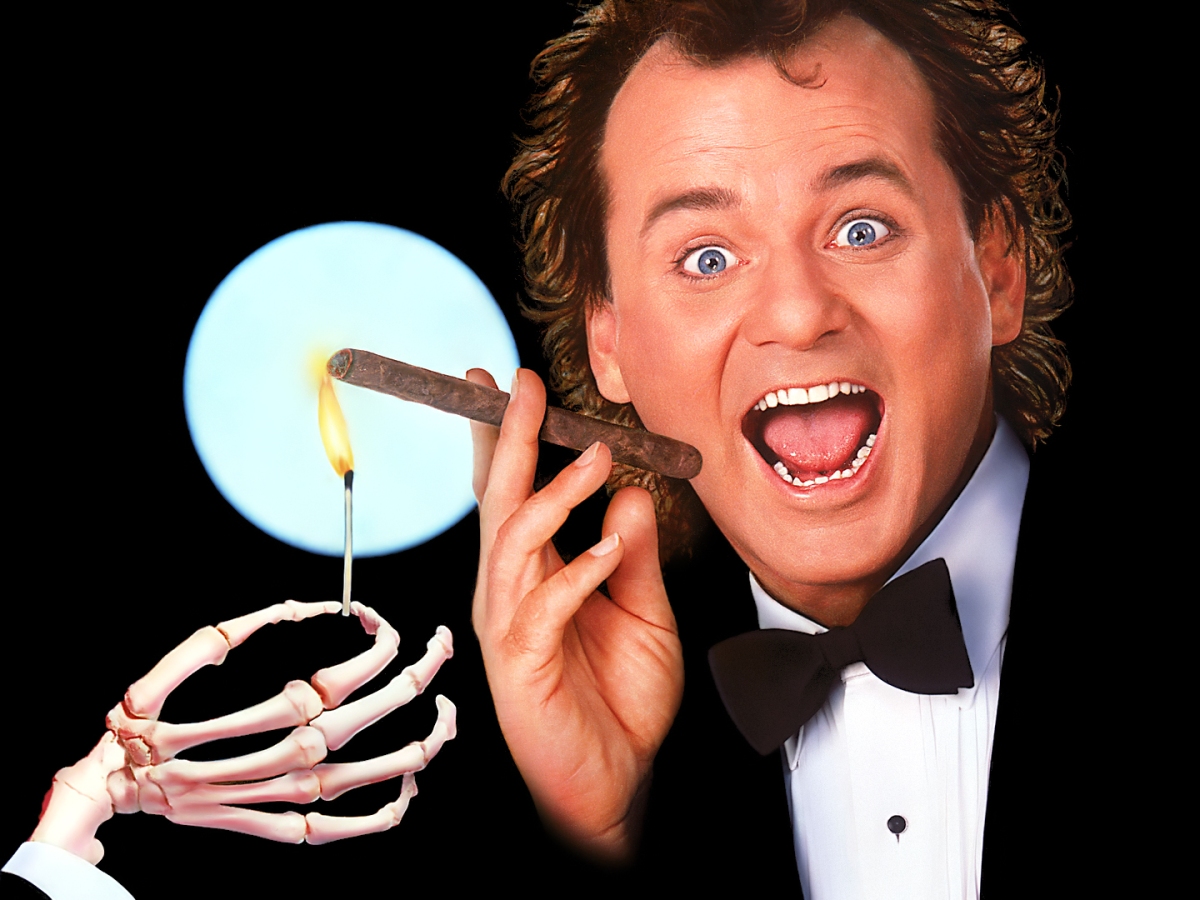
Consumerism and conformity provide the basis for Philip Kaufman’s inspired remake of a Cold War sci-fi classic
Recall for a moment how unsettling it was to discover that the person you had invested so much trust and faith in suddenly turned out to be someone you didn’t recognize. You thought they were trustworthy, committed, level-headed; maybe you thought they were the love of your life. Then you come across the horrible realization that they were not what they seemed. They were a serial cheater, or they were merely using you to get something from you, or they turned out to be a closet alcoholic. Not good times. But we’ve all been through it.
One situation not all of us have been through is waking up to the realization that someone you know is not themselves, but an imposter. This isn’t a sociopath who has wormed their way into your life with the old bait-and-switch. This is someone who looks like John or Jane, talks like John or Jane, but you are thoroughly convinced it’s not John or Jane. In your mind, you believe that someone has gone through the extremely difficult, and probably impossible, task of replacing your loved one with an exact duplicate. To what end, who can say? But if you truly believe this has happened, then your world has been turned upside down and you have tapped into a level of anxiety and fear that few of us will reach.
There is a real psychological condition in which this takes place called Capgras Syndrome. It is often characterized by people being thoroughly convinced that someone close to them has been replaced by an imposter. Scientists have discovered that this takes place because of a short circuit in the brain that cuts the connection between facial recognition and emotional response. Thus, you recognize John or Jane by sight, but recognition alone is not stirring the typical emotional responses you have to seeing their face.
Capgras Syndrome, first explored in the 1920s by French psychiatrist Joseph Capgras, was initially thought to be a disorder among paranoid schizophrenics. Over the years, though, it was determined that this condition could also be triggered by brain injuries or neurodegenerative conditions such as Alzheimer’s disease. Whatever the root causes, it must be a terrifying prospect to suddenly believe that a significant person in your life is an imposter. But what if you were not wrong? What if you were a perfectly sane individual and realized that someone close to you was a complete imposter? Worse still, what if everyone started believing the same thing all at once? No one is what they seem. No one can be trusted. That’s when you’ve got yourself a heavyweight champion premise for a classic science fiction horror tale.

Philip Kaufman’s 1978 film Invasion of the Body Snatchers takes this idea head-on and expertly spins a tale of a small group of people fighting for their souls and their lives in a world that is quite literally becoming increasingly alien. Kaufman’s take is the second adaptation of the Jack Finney novel, The Body Snatchers, a 1955 pulp science fiction tale in which a small California town is besieged by an alien invasion unlike any other. Instead of little green men with ray guns, these aliens are actually seed pods from outer space that create physical duplicates of human beings. The new versions are exact replicas of their hosts—looks, knowledge, memories, everything except human emotions. The duplicates, operating with a hive mind, intend to wipe out the human race, bleed the planet dry of its resources, then move on to another world.
Jack, don’t touch it. You don’t know where it’s been.
Nancy
Finney’s tale was first adapted by director Don Siegel and screenwriter Daniel Mainwaring in the 1956 film Invasion of the Body Snatchers. It became one of the most popular science fiction films of the era and to this day is considered a cinema classic. Some viewers and critics took the film to be an allegory about the threat of communism during the 1950s. These were the early harrowing days of the Cold War. Some perceived that Soviet agents were around every corner, scheming to convert innocent Americans into communist stooges that would help the Soviet Union take over the world. There were many more viewers who took the film to be a statement on anti-communist hysteria of the early 1950s, when baseless accusations of treason and collusion ruined innocent lives. Siegel, Mainwaring, and Finney summarily rejected both the communist and anti-communist warning bells that were read into their story. At heart, they maintained this was just a good old-fashioned thriller. If there was any message at all, Siegel believed it was that the forces of consumerism and conformity would push people into an emotionless void dominated by the pursuit of material gain over spiritual happiness. Imagine that.
Kaufman, a fan of the original film since he was a kid, wanted to put his own stamp on the remake of Invasion of the Body Snatchers and not simply attempt to regurgitate a carbon copy of a masterpiece. He approached the project with the goal of exploring pod people and what it means to become a pod person. Used to describe the aliens in the original novel, the term pod person became a popular expression to describe anyone who mindlessly conformed to the prevailing cultural or political viewpoint without forming their own opinion.
Kaufman moved the setting of the film from the small fictional town of Santa Mira, California to the buzzing, progressive metropolis of his beloved San Francisco. This gave the story a broader scope, portraying the alien menace as a worldwide threat. It also implied the threat as being a greater danger. If the free-thinking, non-conformist, anti-establishment citizens of the City by the Bay can be turned into pod people, then what chance do the rest of us have?

Like any good film that promises to take us into a shitstorm of chaos, Kaufman’s Body Snatchers starts simply enough with a pebble destined to kick an avalanche. Elizabeth, played by Brooke Adams, is a City Department of Health lab scientist who spots a strange, but lovely looking plant and can’t resist bringing it home to her sweet boyfriend, Geoffrey. One would think that as a scientist, Elizabeth might be reticent to expose herself or others to odd-looking unidentifiable plants, but she does work for the government, so it’s hard to say how truly solid her instincts are.
Sure enough, by the next morning, the handsome, loving Geoffrey has become an emotionless robot more interested in listening to the radio. But he’s not the only one. Strange happenings are taking place all over San Francisco (Never call it Frisco, the locals hate that!), and before too long Elizabeth and her work partner, health inspector Matthew Bennell, soon find themselves in a steadily tightening circle of alien conformists looking to extinguish their souls.
Veteran actor Donald Sutherland plays Bennell as a reasoned skeptic who tries to find an explanation for everything right up to the moment when he realizes he can’t and that things have truly gone bat-shit crazy. It’s a much more subtle approach to the hero compared to how he was played in the 1956 version by Kevin McCarthy, whose final act of resistance is to run into traffic screaming, “They’re already here! You’re next!” McCarthy appears in this film in a clever cameo that has him picking up his performance where it left off in 1956. He runs through the streets of Frisco (Oops, I did it.) screaming unheeded warnings about an alien invasion, then gets clipped by a car. No one seems concerned.
The balance of the cast includes a very reputable collection of talent, including Jeff Goldblum as Jack, exhibiting the characteristic jittery anarchy that made him a star in later years, and Veronica Cartwright as Nancy, whose trademark wide-eyed, deer-trapped-in-headlights anxiety is a sure sign that things are about to get weird. Leonard Nimoy plays Matthew’s psychiatrist friend, Kibner, who initially explains away all the odd behavior as people having trouble coping with the demands of our modern technological, consumerist society, a common real-world view at the time that we never really did anything about in future years. Nimoy was instantly recognizable as a cultural icon thanks to his portrayal of Mr. Spock on the Star Trek TV series. The Trek film franchise had yet to emerge when the Body Snatchers remake was released, but Nimoy had already been typecast as the robotic alien scientist type, and his work in this film is evident of his attempt to break out of that mold. He overcompensates a bit to play against type, giving the psychiatrist a new-age guru vibe that would arch the eyebrow of any self-respecting Vulcan. But he still delivers a good performance.

Kibner doesn’t believe the tales Matthew and his other friends tell him about giant pea pods duplicating bodies and making emotionless zombies out of people. Even in San Francisco, that sounds far-fetched. Rather than placate their fears, Kibner just smiles and tells everyone to live long and prosper. (Just kidding. That doesn’t happen.) Instead, Matthew, Elizabeth, Jack, and Nancy are on their own, huddled in dark places, sleeping in shifts to watch out for each other, but soon being driven from their hiding spot by an angry, shrieking mob of pod people.
Each scene is more claustrophobic than the last as our heroes reach the gut-twisting realization that there is no place to go, no one to turn to. The whole city has been overrun. Pod people travel about in quiet, orderly fashion, taking fresh pods off trucks to spread their conformist nightmare to the rest of the world. There are no car horns, no yelling pedestrians. The city is like a living tomb, made all the more unsettling in that these scenes take place at night, with Kaufman making skilful use of long shadows and dark recesses to emphasize the harrowing plight of the remaining humans. All that can be heard are the sounds of garbage trucks hauling off the leftover human husks of those that have been assimilated and the nails-on-a-chalkboard shriek that pod people make when they identify humans.
We want the humans to win the day, but the odds are heavily stacked against them. Nancy disappears, her fate unknown, Jack and Kibner succumb to the Will of the Pod, and try to convince Matthew and Elizabeth that being a pod person is the way to go—no hate, no love, just everyone surviving on this planet until it’s all used up and the time comes to move on to the next. For a split second, it seems like a logical argument. Then you remember how nice it is to have someone to hold, children to make you smile, jokes to make you laugh, and sunrises that make you feel joy. You realize, like Matthew does, that these aliens are full of shit.
In an hour you won’t want them to. Don’t be trapped by old concepts. You’re evolving into a new life form. We came here from a dying world. We drift through the universe from planet to planet pushed on by the solar winds. We adapt, and we survive. The function of life is survival.
Kibner
Elizabeth becomes a statistic of the alien menace, but Matthew escapes. In the film’s final moments, presumably days after his escape, we see him in his office. The world around him is eerily quiet, but people are everywhere. Pod people, that is, all walking in single file, moving like an orderly herd from their offices to their homes and back again. There is also still the work of distributing pods across the world. There is a whole planet out there that still has to be assimilated. Matthew silently slips into the group, following along and not making any movements that would differentiate himself from the hive. He walks outdoors, where alien vegetation lines the streets. It appears that he has picked up the trick of living in silence among the enemy, showing no emotion or any actions that might give him away. Then Nancy quietly walks up to him, and whispers his name, happy to see a familiar face. Matthew turns to her and points, letting out a hideous alien shriek. He hasn’t been pretending to be a pod person. He is a pod person.

This bleak, merciless ending rattled audiences when Invasion of the Body Snatchers was released in 1978. In a decade known for its spiritual morass and societal self-flagellation over the state of the nation and the world at large, this downbeat ending was almost expected in American cinema. Like other 1970s Feel-Bad Science Fiction classics, Body Snatchers gave us no hope of redemption or salvation. The filmmakers and the characters delivered a no-win scenario in which the power of conformity and consumerism proved too much to conquer. And audiences loved it.
Kaufman’s 1978 Body Snatchers was a hit at the box office and is considered one of the best remakes ever made. It stays true to the spirit of the original film while offering a contemporary take on the material. The ending is noticeably more downbeat, but it is worth noting that Siegel’s original cut of the 1956 version also ended on a hopeless note, with Bennell on the road screaming into the camera, “You’re next!” The studio wanted a more upbeat ending, so the director was forced to tack on a coda in which Bennell’s ravings are proved true and the good guys organize to mount a resistance. Finney’s original book also featured a happy ending, with the pods electing to leave Earth after finding us humans too hard-headed for mass subjugation. Thankfully, the 1970s were a much more downbeat time, so we got the dreary, no-hope, feel-bad ending we wanted.
Finney’s book, The Body Snatchers, continues to inspire remakes and adaptations, and there have been two more remakes since Kaufman’s 1978 film, including Abel Ferrara’s 1993 take, Body Snatchers and the 2007 film, The Invasion, directed by Oliver Hirschbiegel and starring Nicole Kidman and Daniel Craig. Both are earnest efforts, but pale in comparison to Kaufman’s nearly flawless film. As long as we live in a world in which we must combat cultural and political conformity and the forces that try to drive us like cattle toward homogeneity, then we can expect to continue to see more versions of this classic story. Its lessons are timeless, and we can always use a refresher now and then.
Director: Philip Kaufman
Screenplay: W. D. Richter
Music: Denny Zeitlin
Cinematography: Michael Chapman
Editing: Douglas Stewart




























Thanks for writing this, I enjoyed it immensely. It’s actually a great remake and that final scene still raises goosebumps to this day, 42 years later. The thing that gets me though is in America, the film gained a PG rating but here in the UK, it was given an X rating! Strange how the ratings boards rated it ok for kids in one country but the other gave it a rating two grades higher and made it 18 years and over only. However, the film still stands the test of time and is a great chiller even today. And Kevin McCarthys cameo was sheer joy.
LikeLike
Thanks, Carl! I saw it on network TV when I was kid back in the 80s, and I remember it being so resolutely creepy. I knew it was a remake, and afterward I saw the original, and I remember being creeped out by that one, too. But the 1978 version still satisfies. My girlfriend read my review, and is now very interested in checking this out. Thanks for reading.
LikeLike